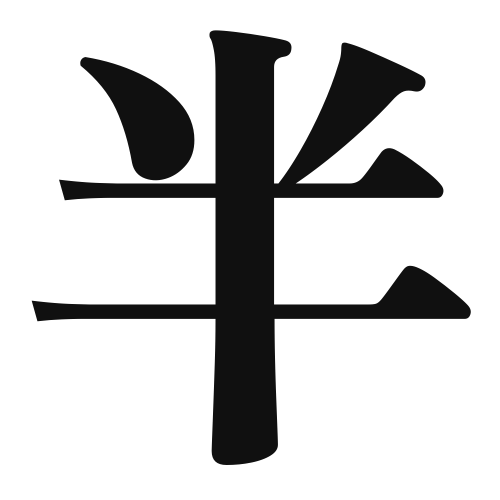1. Overview of Meaning
The kanji “半” (han) means “half” or “semi.” It is used to indicate a division into two equal parts or to express something that is incomplete or partial.
2. Formation and Radical
Formation of the Kanji: The kanji “半” is a phono-semantic compound, which means it combines both meaning and sound elements. It originally depicted a concept of division or being in the middle.
Radical: The radical for “半” is “十” (juu), which means “ten.” This radical contributes to the kanji’s meaning of division, as half of ten is five.
3. Examples of Usage
Common Words and Phrases: Some frequently used words that include “半” are:
- 半分 (hanbun) – half
- 半日 (hanninichi) – half a day
- 半袖 (hansode) – short sleeves
Example Sentences in Daily Conversation:
- このケーキを半分食べました。 (Kono keeki o hanbun tabemashita.) – I ate half of this cake.
- 半日待ってください。 (Hanninichi matte kudasai.) – Please wait for half a day.
4. Synonyms and Antonyms
Similar Kanji: A similar kanji is “部分” (bubun), which means “part” or “section.” While both refer to a fraction of something, “半” specifically denotes half, whereas “部分” can refer to any part.
Antonyms: The antonym of “半” is “全” (zen), which means “whole” or “entire.” This represents the complete form, contrasting with the idea of being half.
5. Cultural and Historical Background
Relation to Japanese Culture: The concept of “half” is significant in Japanese culture, often reflecting balance and moderation. It is common in various aspects of life, from food portions to time management.
Proverbs and Idioms: One common saying is “半端ない” (hanpa nai), which means “extraordinary” or “unmatched,” indicating something that is beyond the ordinary, often used in a positive context.
